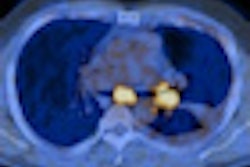Dear Advanced Visualization Insider,
Welcome to this latest edition of our newsletter covering the exciting field of advanced visualization.
Mounting evidence is available to show that computer-aided detection (CAD) systems can produce interpretations that are at least as good as, if not better than, those of humans. CAD is already fairly well established in the breast, lung, and colon, but researchers are now investigating other areas, including the brain and kidney.
To find out more about the current and future status of CAD, we interviewed a leading European expert, Dr. Lars Edenbrandt, professor of clinical physiology and nuclear medicine at Gothenburg University in Sweden. Interestingly, he suggests that a physician view a CAD system in the same way that a pilot uses an autopilot. Visit our Advanced Visualization Digital Community to find out more.
The precise role of robots in medicine remains uncertain. Researchers from Nijmegen, the Netherlands, are doing important work in this area, particularly concerning transrectal MR-guided biopsies. Click here to read the full article.
Meanwhile, a Japanese group has found that adaptive statistical iterative reconstruction (ASIR) technology increases the sensitivity of CAD software when it comes to lung nodules. The authors from Osaka have published their findings in a recent article published online in the European Journal of Radiology. Get the story here.
Today, rapid prototyping is quite widely used in industry, and the process involves converting a virtual 3D image into a physical 3D model. Israeli radiologists have discovered that this technique could have medical applications by putting precise models of patient anatomy in surgeons' hands. Click here to learn more.
The October issue of the European Journal of Radiology contained a significant paper that showed why low-dose 3D contrast-enhanced MR angiography is both practical and reproducible in the carotids, chest, abdomen, and lower extremities, and may reduce the risk of dose-dependent patient complications. Click here for our report.



















